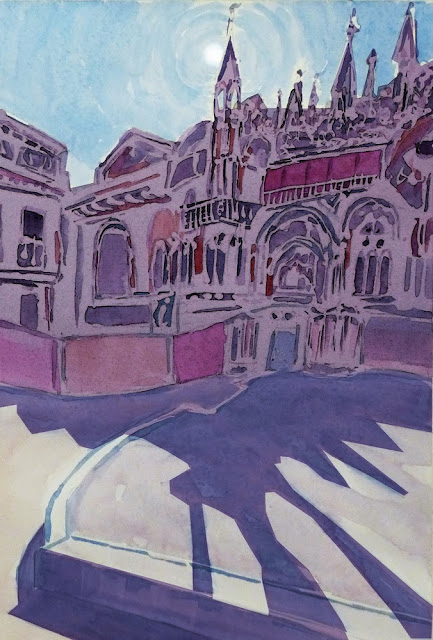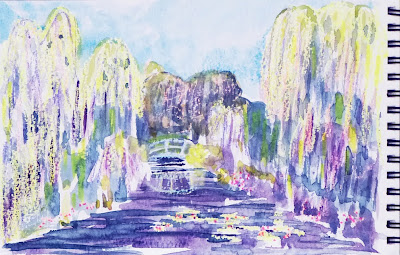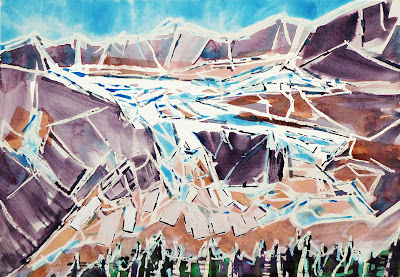Side view of St. Mark’s
in Venice
Watercolour
©2013 Charlene Brown
I agree with what Chris Guillebeau said on his Art of Non-conformity blog: ‘We tend to overestimate what we can do in an average day but underestimate what can be done over the course of a year. Looking at a whole year in review, you may be surprised at everything you’ve accomplished… And next year, if you take this goal-setting process seriously, you may be even more surprised with how much you’ve done over the year.’ This concept has been working for me for five years now!
As I start the sixth year of 1150 Words, I hope to continue
shifting from representational landscapes toward more stylized paintings. I’m planning to continue travel journaling (and, of course,
traveling) as much as I can. So far I
have just one (still tentative) plan for 2014. It involves six countries, two
of which I’ve never visited before.
I’ve painted every Google Streetview location presented in
the Virtual Paintout this year – today’s painting is my second entry in the
December 2013 location, Venice . I plan to continue doing that and
possibly adding some more night-time versions of the views I select. (Understandably, Google Streetview does not include much in the way of night
scenes.)
I published Plein air Painting: the drama through
Kindle Direct Publishing in April (I do not recommend this format for books
with a lot of illustrations) and in paperback on Createspace in May. I’m really pleased with the ease of use and results on Createspace. Both the Kindle version and the paperback are up on Amazon. I’ve started a new book project, including almost 20 blog
posts so far, with a working title, “The Fine Art of Physics.”




































